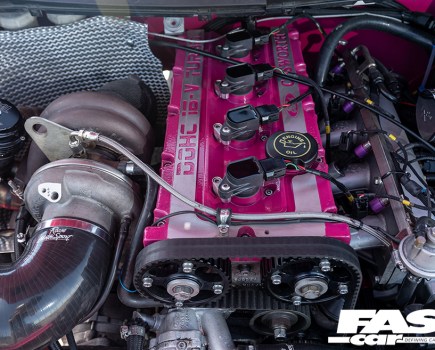Bag your very own James Bond car – a 217bhp, turbocharged, five-cylinder bargain that’s fast, rare and practical It’s our Mk4 Ford Mondeo 2.5T buyer’s guide.
Guide from Fast Ford magazine. Words: Dan Williamson.
Why you want a Ford Mondeo 2.5T
- Who doesn’t hanker after a James Bond car? For 2006’s Casino Royale, Daniel Craig drove a Tonic (metallic blue) 2.5T in a blatant scene of product placement.
- Few modern cars offer the practicality or space of a Mk4 Mondeo – they’re enormous – and 2.5s tend to be particularly well-equipped. They’re astonishingly smooth mile-munchers.
- The five-pot motor is shared with the Focus ST225 and Mk2 RS, so it’s extraordinarily tuneable and would make an epic sleeper.
Why you don’t…
- Ford sold hardly any Mk4 2.5s, so you could be searching forever to find the right combo of bodystyle, colour, trim and spec.
- Mondeo Man isn’t exactly a cool image: you’ll not fend off mates’ minicab/pensioner jokes by repeating ‘it’s the same engine as the Focus RS, you know’ at every show…
- The five-cylinder engine doesn’t half like a drink, and you’ll be lucky to see 30mpg. It’s also prone to suffering from split cylinder liners, so it’s far from cheap to run.
Ford Mondeo 2.5T Mk4 history
October 2000 – Ford Mondeo Mk3 introduced, built at Genk, Belgium, followed by sporting ST220 variants in 2002.
February 2007 – Ford Mondeo Mk4 launched in UK, referred to within Ford as third-generation Mondeo or codename CD345. Offered as four-door saloon, five-door hatchback or five-door estate, it is based on the EUCD platform shared with S-Max, Galaxy, Volvo and Land Rover.
5 March 2007- Mondeo Mk4 enters mass-production at Genk, replacing Mk3. Range includes various four-cylinder petrol and diesel powerplants plus Volvo-sourced B5254T3 five-cylinder engine (referred to by Ford as 2.5 Duratec) with KKK turbo, available only in Ghia, Titanium and Titanium X specifications in saloon, hatchback or estate bodystyles.
October 2007 – Mondeo XR5 Turbo introduced in Australia, featuring 18in alloy wheels, lowered sports suspension, and bodykit comprising front and rear bumpers, unique upper and lower grilles and side skirts.
6 May 2008 – Mondeo Titanium X Sport launched in UK as five-door hatchback or estate, based on XR5 Turbo. Standard features include bodykit, 18in alloys, Alcantara/leather seats with red stitching, alloy pedals, xenon headlights and sports suspension.
March 2010 – Ford Mondeo 2.5T discontinued. Replaced by 236bhp 2.0 EcoBoost in January 2011.
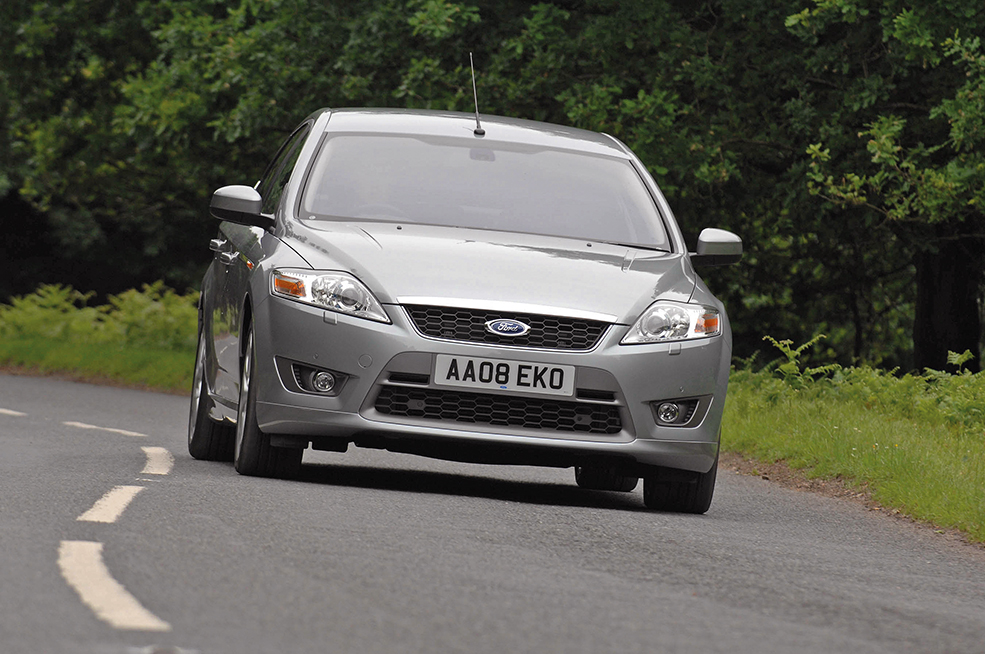
Ford Mondeo 2.5T Mk4 key points
Which one? Various trim options, bodystyles, extras and rarity of the 2.5 mean you will struggle to find your ideal Mk4. But it’s (probably) out there, so keep searching.
Engine – Misfires, water mixing with oil and white smoke from the exhaust tell you to run away – cracked cylinder liners are the likely cause, meaning a replacement engine is required.
Transmission – Any Mk4 running more than standard power – even a Stage 1 map – will kill its clutch quickly. Take a test drive and test for slip by booting the throttle in a high gear.
Suspension – PAS problems can be pricey, so listen for nasty noises. Clonking and knocking is more likely worn bushes or suspension top mounts.
Interior – Tatty cabin? Lots of rattles? Collapsed driver’s seat? Worn-out carpet? You don’t need to spot beaded seat covers or vomit in the back seat to suspect any Mk4 Mondeo has been used as a minicab…
What to look out for on the Ford Mondeo 2.5T Mk4
Identity
Mondeos aren’t prime targets for theft and fakery, but a history check is vital to ensure it’s not a ringer, write-off or subject to outstanding finance. Check the VIN on the logbook matches the numbers on the sticker on the driver’s-side B-pillar, stamped under a flap in the carpet on the driver’s-side sill (in front of the seat) and on the nearside dashboard, visible through the windscreen.
Ideally, connect an OBDII code reader to the Mondeo’s diagnostic port (beneath the steering wheel, under the dash) and compare the VINs.
If you’re concerned about which model you’re buying – it’s easy to get caught out – the Ghia, Titanium and Titanium X were all offered as four-door saloons, five-door hatchbacks or estates, while the Titanium X Sport could be bought only in hatchback or estate form.
The Ghia had wood-effect dashboard and interior trim details, Gillos cloth upholstery (optional perforated leather), 17in 7×3-spoke alloy wheels, chrome grilles, chrome door/window trims, and chrome strips in the door handles.
Titaniums had 17in 7×15-spoke alloys (Y-spoke from 2008), blue-tinted glass, sports seats with New York upholstery, brushed chrome dashboard, silver-finished grilles and chrome door trims; the Titanium X added Alcantara/leather upholstery, adaptive headlights, auto wipers, heated seats and Ford Power start button.
All were offered with Sport Pack of 18in Y-spoke wheels, sports suspension and rear spoiler (on five-doors and estates).
The range-topping Titanium X Sport was available only as a hatchback or estate, and came as standard with Sport Pack plus full bodykit, chrome exhaust tailpipes, Alcantara/leather seats and door cards with red stitching, alloy pedals, black dash trim, and xenon headlights.
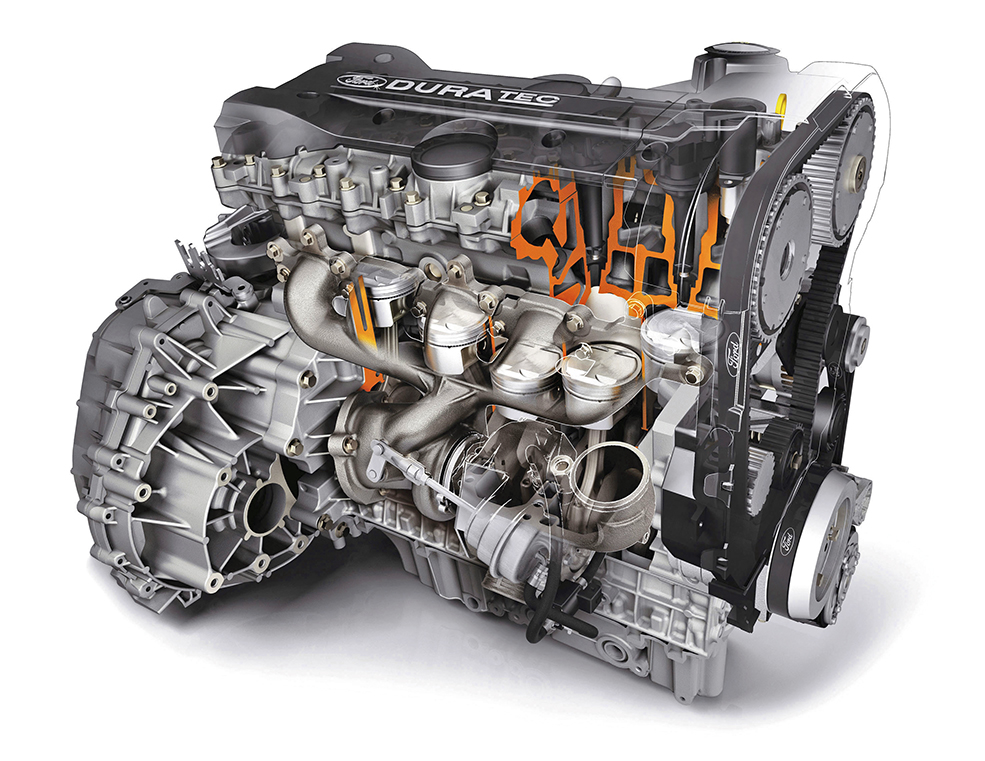
Engine & Transmission
Almost the same as the five-pot found in the Focus ST225 and RS Mk2, the Mondeo’s 2521cc Volvo-sourced engine is susceptible to the same issues. Indeed, Collins Performance says the Mondeo’s additional weight puts greater strain on the components, and cracked cylinder liners are proportionally more common in the larger car.
Check for symptoms of split liners, which are similar to head gasket failure: water in the oil and/or misfiring after a cold start, or white smoke from the exhaust. Watch out for an engine that’s been upgraded with the well-known ‘block mod’ (shims between the liners) because it’s sometimes done to reduce water leakage on a knackered block instead of a precautionary measure.
Check the oil filler cap for sludge – most likely from a failed oil filter diaphragm housing, which makes a whistling noise at idle and can cause cam seals to leak. An uprated diaphragm should be fitted instead.
The Mondeo is no fireball, but particularly poor performance could come from a boost leak or blown sensor – often the boost control solenoid, which is a cheap and easy fix.
Rough running tends to be caused by MAP or MAF sensor issues. Air leaks are common, from split intercooler hoses, knackered sound symposer (fixed with a blanking plug); the engine management light will probably be aglow.
Look for coolant leaks from the thermostat housing, radiator top hose and turbo feed. Listen for gruff noises, especially at start-up – possibly from the exhaust or manifold gasket, especially on the turbo side. Squealing is probably a tensioner pulley or belt –it needs changing to avoid damage.
High-mileage Mk4s aren’t uncommon, and 200k isn’t a concern if well-maintained. Oil changes should be 5W30 yearly/every 12,000 miles, and cambelt at ten years/100k miles (ideally at 60,000 miles/five years); expect to spend £500 on the job.
Don’t assume you can simply bung an RS engine into a Mondeo, or use the Mk4’s 2.5 to repair a knackered ST225: although the internals, head and ancillaries are the same, the cylinder block casting is different for the driveshaft supports. The Mondeo’s is the same as the S-Max, Galaxy and Kuga 2.5T, and can be upgraded by installing RS pistons and rods into the Mondeo block.
But the fuelling setup is completely different: Mondeos have Volvo-type variable fuel pressure (2-bar at idle; up to 5-bar at high revs) instead of the Focus’s static 4-bar in-tank fuel pump. This makes modifying more complex – 250-to-280bhp is the sweet spot, so beware of a Mk4 claiming more than 300bhp. At this level, an uprated intercooler is also essential.
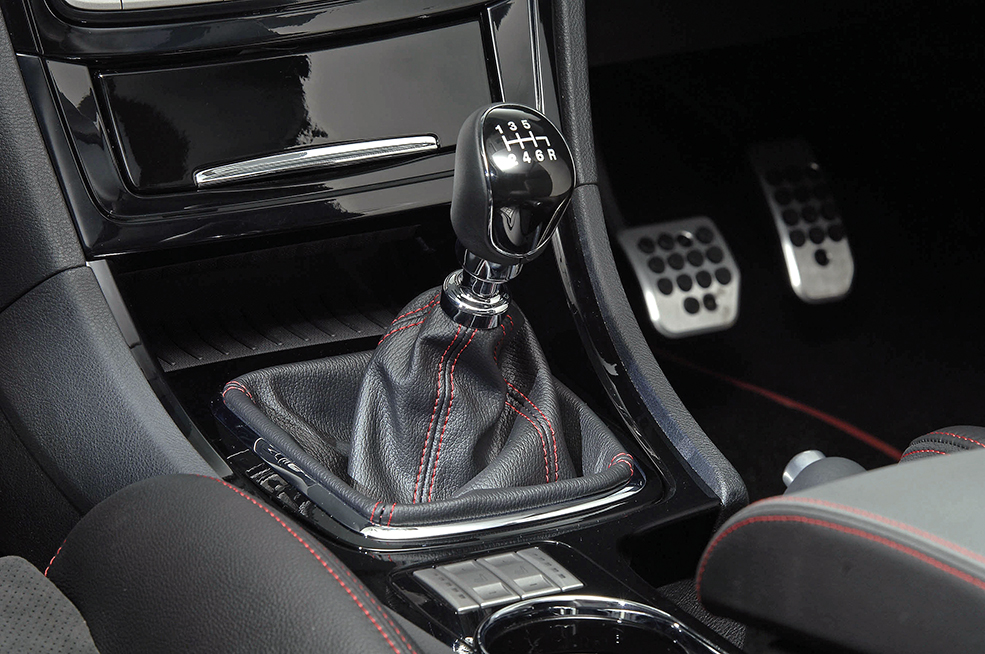
Mondeo 2.5T’s Getrag M66 six-speed manual gearbox was also found in the Focus ST225, so it’s strong and durable.
The same can’t be said for the clutch, which will expire immediately when faced with even a Stage 1 remap. Check for clutch slip by driving in fifth gear at 2000rpm and flooring the throttle; if the rev counter spins but the road speed doesn’t increase, the clutch is knackered. A Focus RS Mk2 clutch, with pressure plate and flywheel, is a direct-fit, cost-effective upgrade, which can handle 450bhp.
A clutch swap should be accompanied by a replacement dual-mass flywheel (DMF) and slave cylinder, which increases the cost but alleviates further problems; a tired DMF will be rattling at idle, with vibrations felt through the clutch pedal. Signs of a failed slave cylinder will be a clutch pedal that doesn’t return to the up position after pressing; the symptom can also arise after a clutch change or overheated fluid, so may only need bleeding.
Listen for clonking or grinding from the front end while in first or reverse gear, which could point to a worn or damaged driveshaft, or simply in need of lubrication. Clicking on full lock will be due to a failed CV joint, which is relatively cheap to repair.
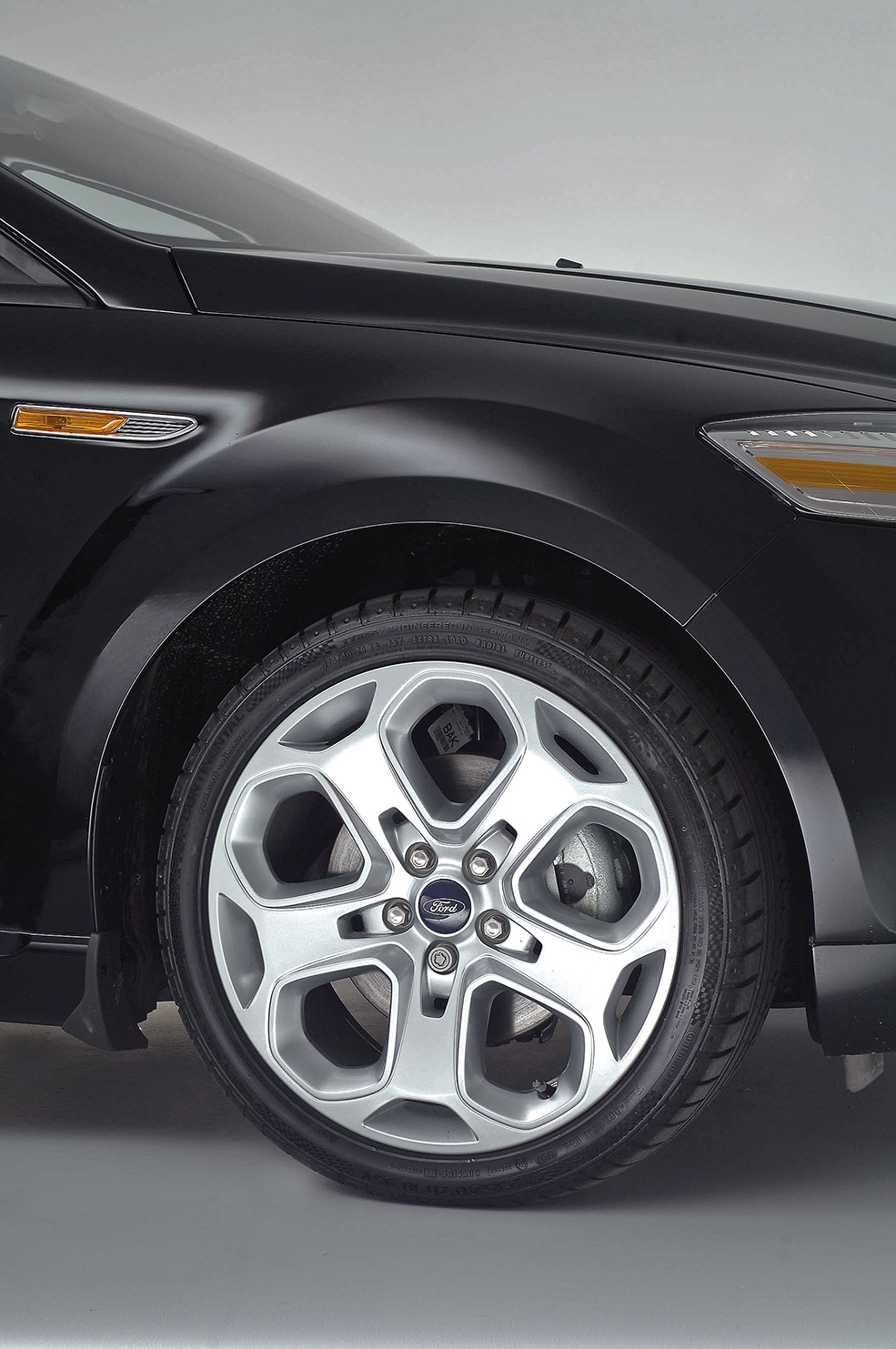
Suspension & Brakes
Mk4 Mondeos are massive – bigger than the last Granada/Scorpio – and feel it too, so it’s not a sporty drive. But for a large car they’re nimble and engaging, so there should be no sloppiness in the suspension or vagueness when driving.
All Mk4s share the same steering, suspension and brakes (apart from Sport Pack and Titanium X Sport, which wear lowering springs), so the 2.5 suffers from the same few issues.
Mk4s are known for PAS (power-assisted steering) problems, so listen for whining or groaning noises, and ensure the steering isn’t heavy or notchy. A slight hum on full lock is normal, but anything else could point to failure of the PAS pump or steering rack – both are expensive to fix, although if well-maintained and caught early, regular fluid changes may help.
Knocking felt through the steering could be caused by failed anti-roll bar drop links or – more likely – front suspension top mount bearings. Parts are cheap, but replacement means dropping the MacPherson struts. Front subframe bushes should be checked too; worn oil-filled versions can be swapped for polyurethane upgrades without detriment to ride quality.
Rear suspension bushes are a common weakness; check the trailing arms and subframe, even on a low-mileage Mondeo. Trailing arm bushes aren’t overly pricey but need a special tool to avoid having to remove the entire arms from the car. A visual inspection should be enough, but the rear end will knock if the bushes are completely shot. Check the subframes for excessive corrosion.
IVDC electronic damping was optional, although rarely specified. If fitted, inspect the wiring under the wheelarches, which can chafe and wear though.
Listen for rumbling wheel bearings, and check the tyre treads; the 2.5 is heavy on rubber (especially fronts), so don’t be surprised to find cheap and noisy Chinese tyres ruining the Mondeo’s ride and handling.
Despite their performance potential, 2.5s wore the same brakes as bottom-of-the-range Mk4s, so wear rates can be high, and taxi-special pads won’t feel great. Mondeos were recalled due to an ABS fault, which caused the brakes to lock under heavy use, but it’s unlikely to be an issue these days.
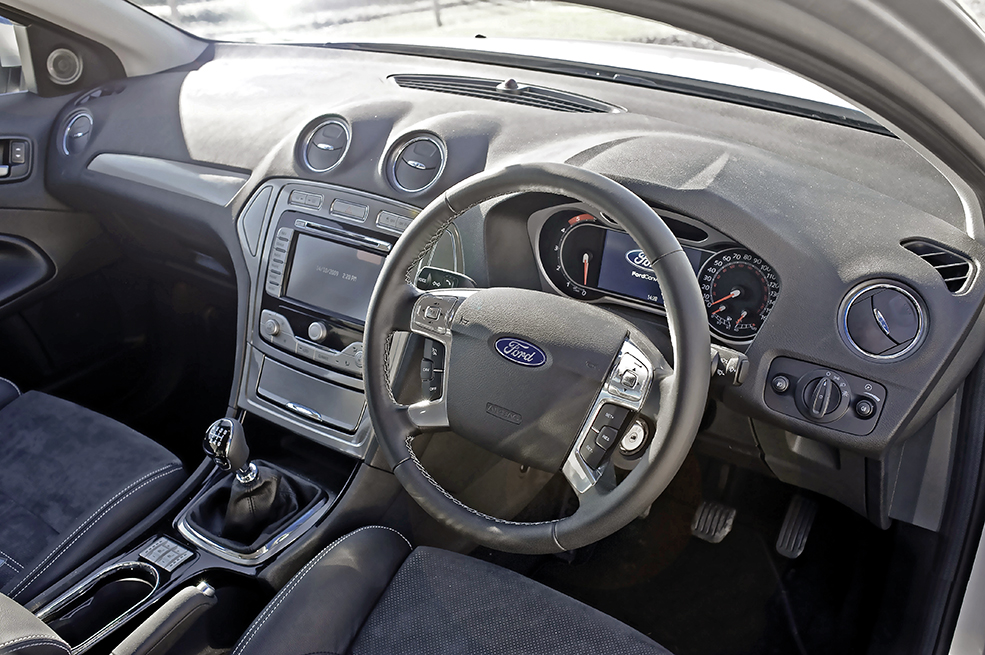
Interior
Mk4s had a durable cabin, with choice of several executive trim levels for the 2.5. Any example with a tatty interior has ether been abused or travelled a few laps of the planet.
Rattling, creaking or loose trim are potential complaints, especially around the dashboard, glovebox, centre console and front doors.
Some owners report problems with the seats, suffering broken headrests, side bolsters collapsing, and general lack of support. Even sporty models lack the figure-hugging comfort of a Recaro, and most came with manual adjustment (other than electric raising and lowering); multi-function memory seats were a rare option, and full leather is less common still.
Check the instruments for warning lights. Seatbelt deactivation is common (and easily cured without a diagnostic tool), as are dancing dials, accompanied by the stereo turning itself on and off; a software update is the cure, but disconnecting the battery tends to give a temporary fix.
Worn-out buttons aren’t necessarily a sign of age – they’re quite common – and sticky cruise control switches are often rectified with contact cleaner.
Problems with the audio system are varied, including Bluetooth voice control being tricky to connect, DAB radio not working, flickering sat nav/reversing camera display, and faulty parking sensors. Software updates are sometimes the cure.
All 2.5s had dual-zone climate control, so ensure the air con works properly and gets ice-cold; condenser failure is common and expensive to fix.
Many Mk4 owners have reported fuses blowing for no reason, early failure of the remote-control key fob (always use a good-quality CR2032 battery), and temperamental electric window and central locking mechanisms caused by faulty door modules; give the key a few presses to ensure everything works.
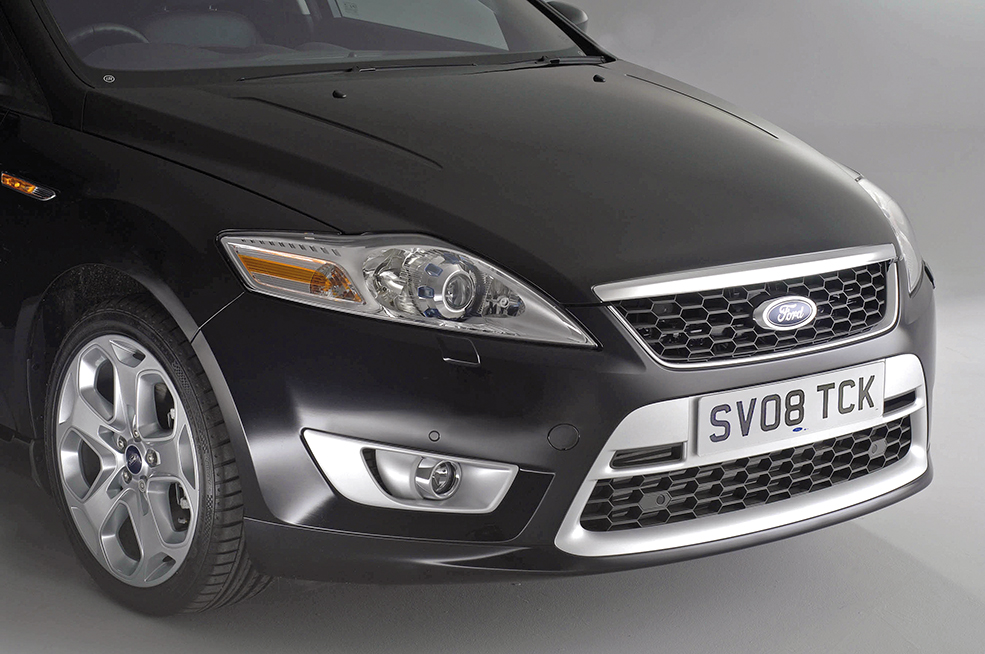
Exterior
Rusty Fords are common, but not if it’s a Mk4 Mondeo. Signs of serious bodywork corrosion suggest badly-repaired accident damage (look for overspray, creases, poor panel gaps and signs of body filler). But don’t be surprised to see minor rust around the rear wheelarches and within the inner arches (behind the plastic wheelarch liners, which hold moisture).
Early hatchbacks were particularly prone to rainwater leaking into the luggage compartment, flooding down beside the seals and into the boot. The problem was cured on cars built from mid-2008 onwards, but check carefully for dampness and even resultant corrosion.
Boot locks occasionally stick, as does the bonnet lock and cable; regular lubrication/maintenance avoids these problems. All Mk4s are prone to losing the weather seals that run beneath the doors thanks to fragile clips.
A sunroof is a rare (and desirable) option, which may judder when opened or leak into the cabin; replacement seals are the answer. Parking sensors were a useful option, but also play up. A heated windscreen was standard, but elements sometimes fail, requiring a whole new ‘screen.
Headlamps and indicators have strange quirks, sometimes operating for no reason or going out and giving a flash on the dashboard. It’s reckoned to be a body ECU fault, although some owners find success with spraying the light connectors with contact cleaner. The adaptive headlights also fail, often caused by a faulty levelling sensor or sometimes just a poor electrical connection.
Tech Spec: Ford Mondeo 2.5T Mk4
Engine:
2521cc in-line five-cylinder, 20-valve, DOHC Duratec with alloy block and head, 9.0:1 compression ratio, toothed belt drive, VVT (variable valve timing), KKK-Warner turbocharger, sequential electronic fuel injection, Bosch ME 9.0 ECU, electronic distributorless ignition
Transmission:
Front-wheel drive with Getrag Ford Durashift M66 six-speed manual gearbox
Suspension:
Front: MacPherson struts, coil springs, lower control arms with hydro-bushing, anti-roll bar; rear: independent control blade multi-link system, coil springs, anti-roll bar; lowered springs on Sport Pack and Titanium X Sport; ESP; optional interactive vehicle dynamic control (IVDC)
Brakes:
Front: 300mm ventilated discs; rear: 302mm solid discs; ABS with electronic brake force distribution
Wheels & Tyres:
7.5x17in alloys and 235/45×17 tyres or 8x18in alloys and 225/40×18 tyres (depending on model)
Exterior:
Mondeo Mk4 four-door saloon, five-door hatchback or five-door estate with automatic headlights and wipers (Ghia, Titanium X and Sport), electric/heated door mirrors with puddle lights, heated windscreen, xenon headlamps (X Sport; optional on others), adaptive front lighting (Titanium X; optional on others), parking sensors (X and Sport), bodykit and exhaust finishers (Titanium X Sport). Optional sunroof, Sport Pack (18in alloys, rear spoiler (hatchback and estate only) and sports suspension), rear privacy glass, solar-reflect windscreen, metallic paint
Interior:
Sports-style seats (Titanium models), electric-height-adjustable driver’s seat, heated seats (Titanium X and X Sport), Alcantara/leather upholstery (Titanium X), Alcantara/leather upholstery with red stitching (Titanium X Sport), leather gearknob and handbrake handle, leather steering wheel, steering wheel with polished spokes and red stitching (X Sport), dark-wood effect dashboard (Ghia), brushed chrome dashboard (Titanium and X), carbo-tex dashboard (X Sport), alloy pedals (X Sport), electrically-operated windows, keyless with Ford Power starter button (X and Sport), ambient lighting, climate control with second-row air vents. Optional electric passenger seat, climate-controlled seats, leather upholstery (Ghia), wood steering wheel (Ghia), integrated sunblinds, Technology Pack II (tyre pressure monitoring system, keyless entry, eight-way power driver’s seat with memory; X and X Sport only), various audio upgrades




